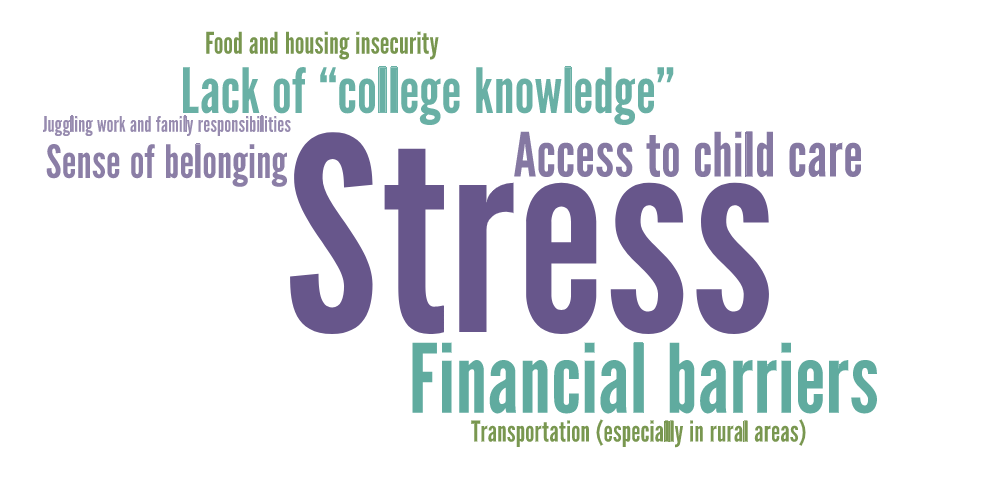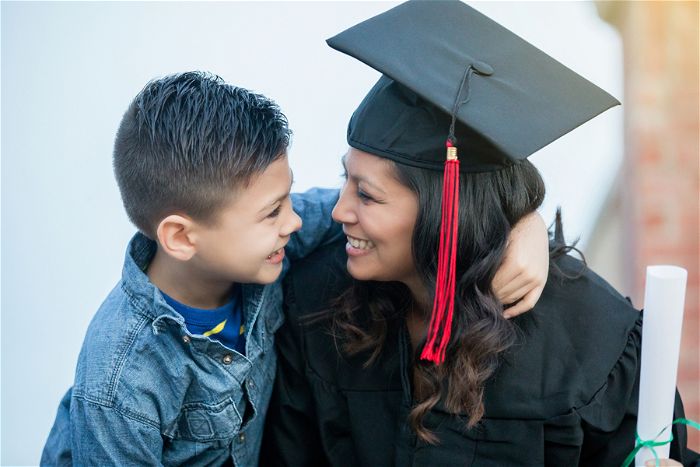When asked what colleges and individuals can do to address these barriers and create more student-centered institutions, these were some of the ideas that emerged:
1. We need a more comprehensive onboarding process. Current processes overload students with too much information and ask them to make important decisions about their academic futures without much guidance. In an ideal world, students would be engaged in conversations about academic and career planning as soon as they fill out an application form and would receive just-in-time support leading up to and during their first semester. They would get a roadmap that explains all the necessary processes to enroll and register for classes. Someone would check in with them regularly before classes start and throughout the semester. Orientation would include sessions for families—parents, significant others, and children. These sessions would focus on what to expect when a family member is in college and would be especially important for first-generation students.
2. Currently, career, academic, and financial advising are conducted separately, but they all need to be discussed together. In particular, students need much more comprehensive upfront career advising. They need a realistic picture of the career options available to them, what those careers pay, and the work (and tuition) required to access those careers. Students who are undecided need more opportunities to explore majors and careers. For example, colleges could hold career fairs as part of orientation, invite alumni to speak, or add career assessments into registration.
3. Everyone at the college—leadership, faculty, and staff—needs to understand the reality of students’ lives. This means recognizing the many responsibilities that students are juggling outside of school. Some participants talked about going through a “cost of poverty experience” and how it opened their eyes to the challenges students face on a daily basis. This also means learning more about the student experience at the college, including the parts that are confusing or frustrating. A few participants said that it wasn’t until they tried to take a class that they realized how confusing it can be.
4. Students need to be able to make informed decisions about their educational and career plans. They need honest information about what different programs entail, what career opportunities exist for graduates, what those jobs pay, and what the work itself is like. Students considering online classes need to understand the technology and resources required for success. We shouldn’t assume students understand which jobs require which degrees or how long it takes to earn a bachelor’s degree on a part-time basis. It’s our job to guide them through these decisions and understand what is right for them.
5. Colleges can develop common resource guides, including on-campus and community resources, and train all faculty and staff on how to use them. Resource guides should include transportation, food banks, child care, and health resources (including mental health). In addition, colleges need to work to remove the stigma of seeking support services. Rather, accessing services should be a normal part of the student experience.






